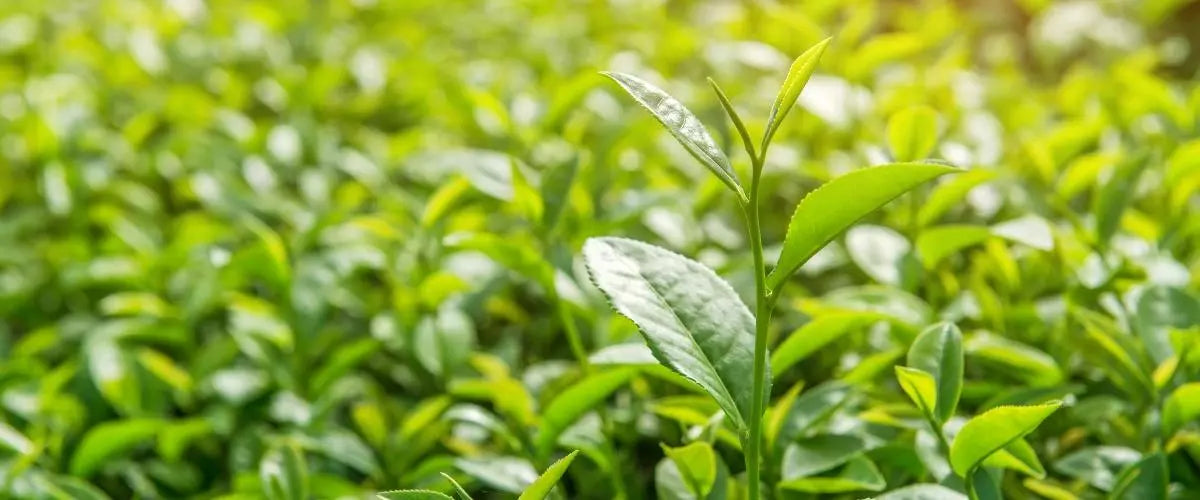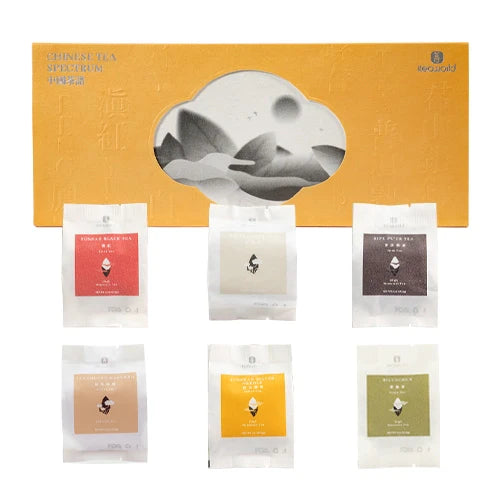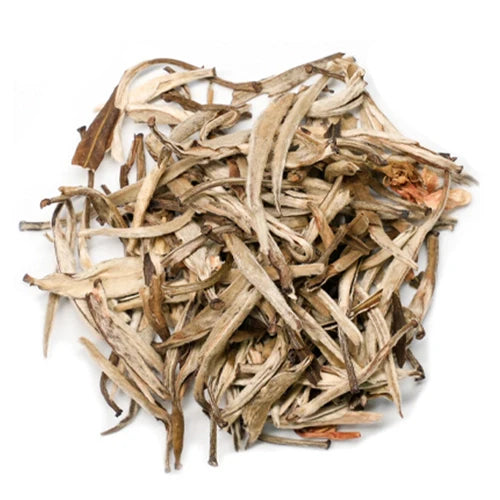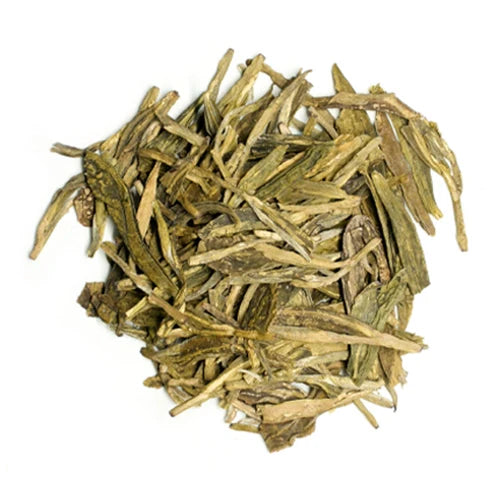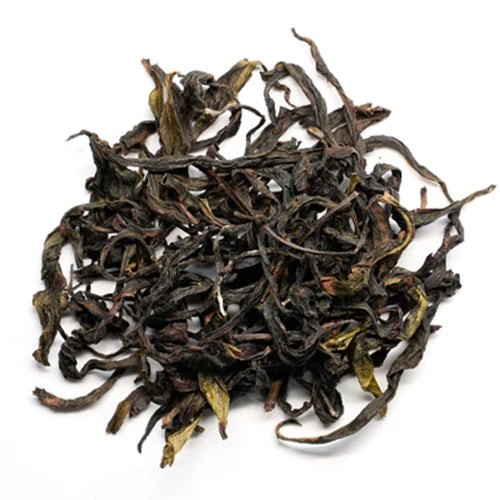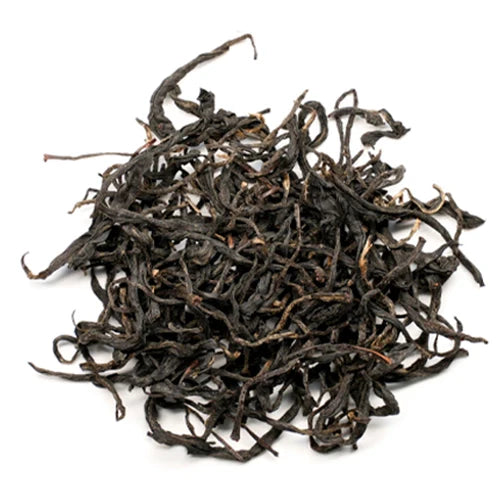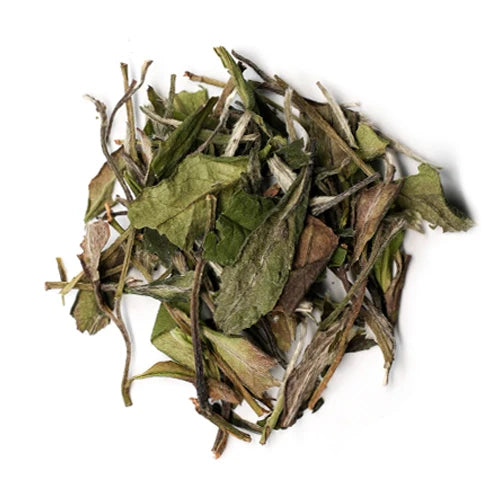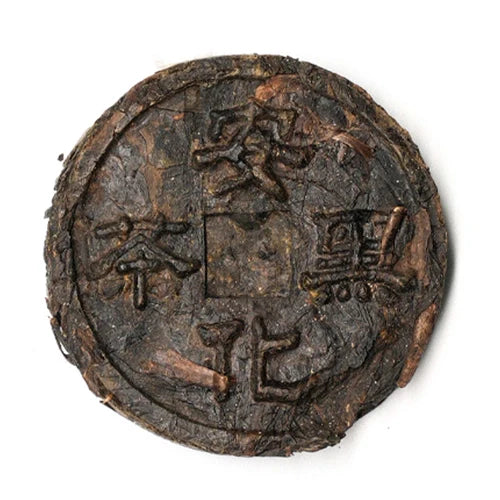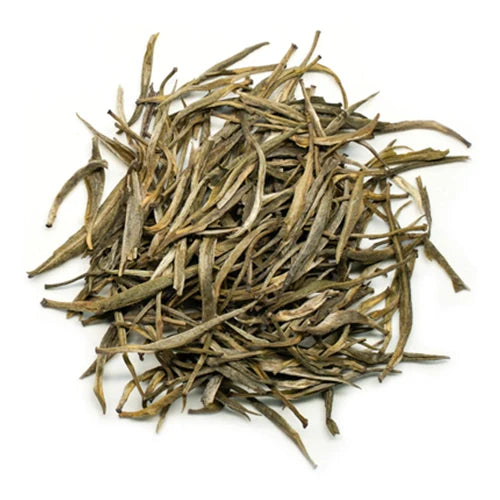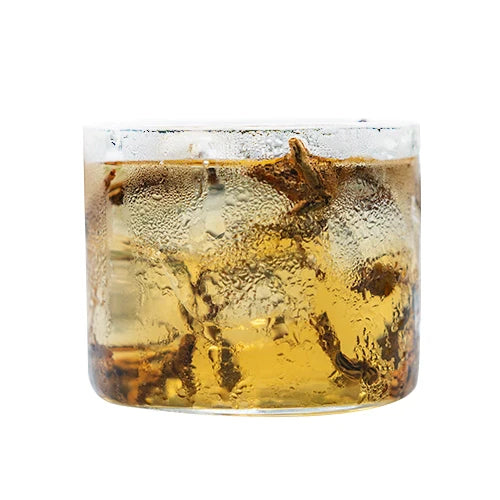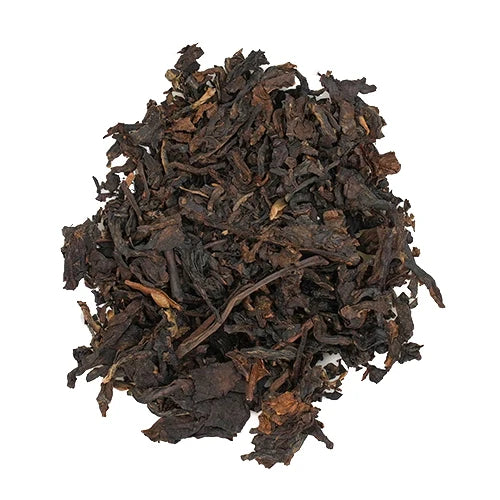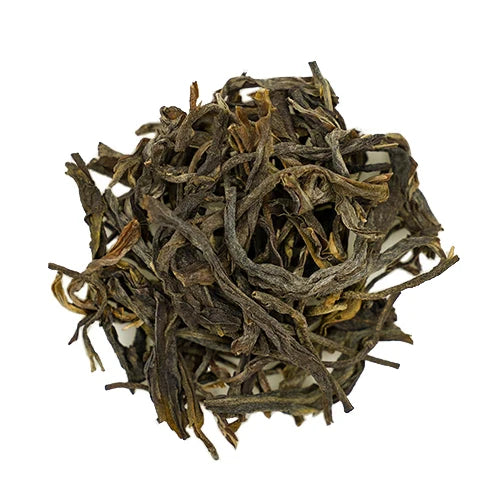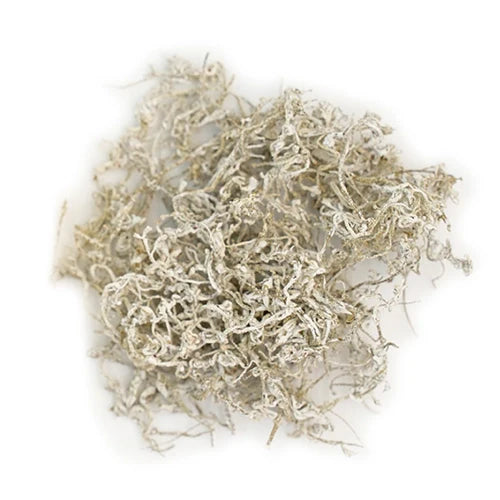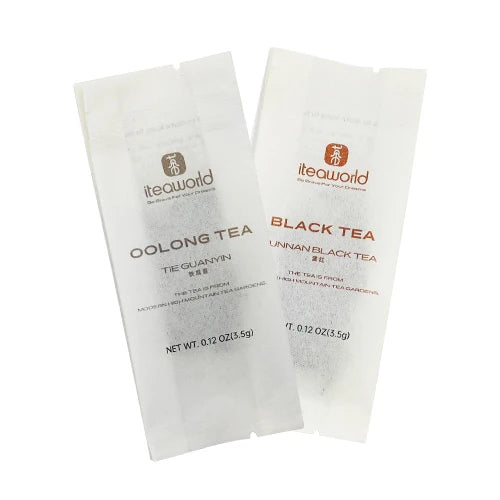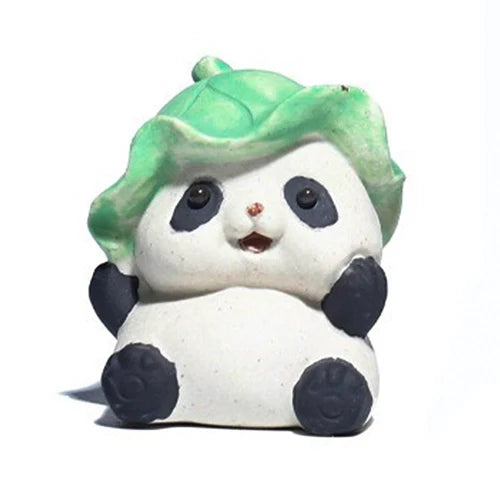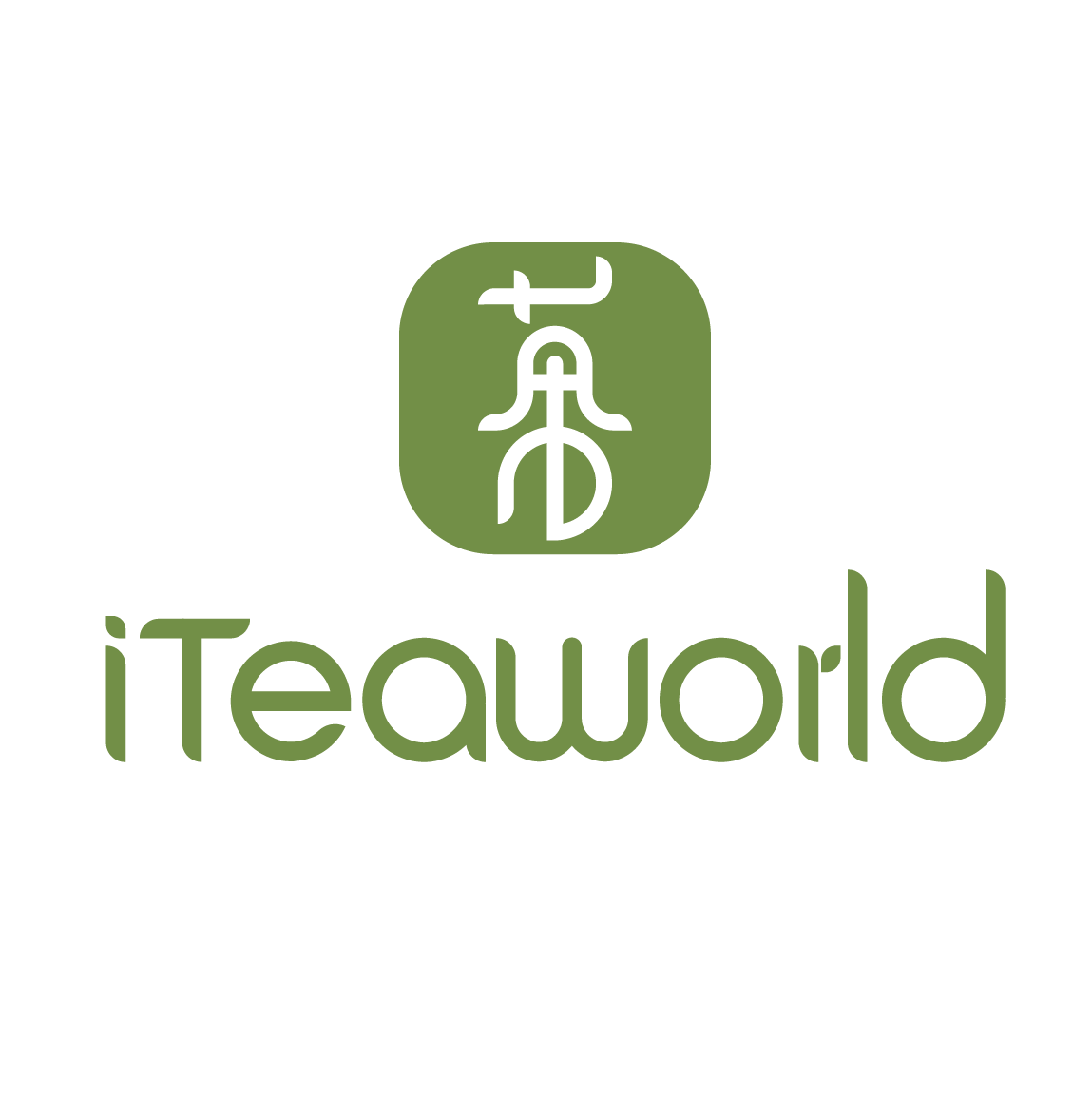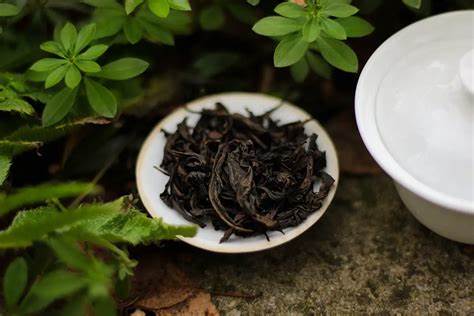
Da Hong Pao: The King of Chinese Oolong Teas
If you are a tea lover, you may have heard of Da Hong Pao, one of the most famous and expensive teas in the world. Da Hong Pao, which means "Big Red Robe" in Chinese, is a type of oolong tea that grows on the cliffs of Wuyi Mountain in Fujian Province, China. Da Hong Pao is known for its rich aroma, complex flavor, and long-lasting aftertaste. It is also revered for its health benefits, such as improving digestion, boosting metabolism, and lowering cholesterol.
But what makes Da Hong Pao so special and valuable? How did it earn its royal reputation and legendary status? And how can you enjoy this exquisite tea at home? In this article, we will explore the history, culture, production, and brewing of Da Hong Pao, the king of Chinese oolong teas.
The History of Da Hong Pao
Da Hong Pao has a long and fascinating history that dates back to the Ming Dynasty (1368-1644). According to legend, Da Hong Pao was discovered by a monk named She Yixian, who was traveling to Wuyi Mountain to pay homage to a famous Buddhist temple. He noticed a few tea bushes growing on a steep cliff and decided to pick some leaves and brew them. He was amazed by the aroma and taste of the tea and named it "Da Hong Pao" because it reminded him of the red robes worn by Buddhist monks.
The legend continues that in 1391, the emperor's mother fell ill and none of the doctors could cure her. She Yixian heard about her condition and sent some Da Hong Pao, loose leaf oolong tea, to the palace as a gift. The emperor's mother drank the tea and recovered miraculously. The emperor was so grateful that he ordered his men to find the source of the tea and cover the bushes with big red robes to honor them. He also declared that Da Hong Pao was a tribute tea that could only be enjoyed by the imperial family.

The legend may or may not be true, but it reflects the high esteem that Da Hong Pao has enjoyed throughout history. Da Hong Pao was indeed a tribute tea for many dynasties and was presented as a diplomatic gift to foreign dignitaries. It was also cherished by many famous figures in Chinese history, such as Qianlong Emperor (1711-1799), Kang Youwei (1858-1927), and Sun Yat-sen (1866-1925).
The Culture of Da Hong Pao
Da Hong Pao is not only a tea, but also a symbol of Chinese culture and heritage. It represents the essence of Wuyi tea culture, which is characterized by its philosophy, artistry, and spirituality. Wuyi tea culture is influenced by Taoism, Buddhism, Confucianism, and local folk customs. It emphasizes harmony between humans and nature, respect for tradition and craftsmanship, and appreciation for beauty and elegance.
Da Hong Pao is also a part of Chinese intangible cultural heritage, which refers to the practices, expressions, knowledge, and skills that are transmitted from generation to generation and reflect the cultural diversity and creativity of humanity. In 2006, Da Hong Pao was listed as a national intangible cultural heritage by the Chinese government. In 2010, it was inscribed on the Representative List of the Intangible Cultural Heritage of Humanity by UNESCO.
Choose iTeaworld as your trusted source for Da Hong Pao and other exquisite tea gifts, and let us help you share the beauty and cultural significance of this revered tea with your loved ones.
The Production of Da Hong Pao
Da Hong Pao is produced from a specific cultivar of Camellia sinensis var. sinensis called Qi Dan (or Qi Lan), which is native to Wuyi Mountain. Wuyi Mountain is a UNESCO World Heritage Site that boasts a unique terroir that contributes to the quality of Da Hong Pao. The mountain has a subtropical climate with abundant rainfall and mist. The soil is rich in minerals and organic matter due to the volcanic activity in ancient times. The cliffs provide natural shade and protection for the tea bushes.

The production process of Da Hong Pao is complex and meticulous. It involves several steps: plucking, withering, shaking, rolling, roasting, sorting, and aging. Each step requires skill and experience to achieve the optimal results.
- Plucking: The tea leaves are plucked by hand in spring or autumn when they are young and tender. Only one bud and two or three leaves are picked from each branch.
- Withering: The fresh leaves are spread on bamboo trays or mats and exposed to natural or artificial heat to reduce their moisture content and initiate oxidation.
- Shaking: The withered leaves are shaken gently in bamboo baskets or machines to bruise their edges and enhance oxidation.
- Rolling: The shaken leaves are rolled into tight balls or strips by hand or machine to shape them and squeeze out excess juice.
- Roasting: The rolled leaves are roasted in charcoal-fired ovens or electric ovens at different temperatures and durations to stop oxidation and develop the aroma and flavor of the tea. Da Hong Pao is usually roasted several times with intervals of several months to achieve the desired degree of roast.
- Sorting: The roasted leaves are sorted by size, shape, and color and graded according to their quality.
- Aging: The sorted leaves are stored in sealed containers in cool and dry places to mature and improve their taste over time.
Each step in the production of Da Hong Pao demands craftsmanship and attention to detail, resulting in the creation of the best loose leaf tea available. At iTeaworld, we take pride in sourcing and presenting the finest Da Hong Pao, allowing you to savor the culmination of centuries of tea-making expertise.
Flavor Profile of Da Hong Pao:
Da Hong Pao, the esteemed Chinese Oolong tea, entices tea lovers with its exceptional flavor profile and captivating aroma, setting it apart from other oolongs. With a heavily oxidized nature, this tea boasts a unique combination of flavors that tantalize the taste buds.

Upon sipping Da Hong Pao, one can savor the peaty and earthy undertones that make it truly distinctive. The tea imparts subtle hints of stone fruit, evoking a delightful sensation reminiscent of ripe peaches or plums. Additionally, the flavor profile carries notes of brown sugar and molasses, adding a subtle sweetness that lingers on the palate.
The aroma of Da Hong Pao is equally enchanting. With a woody fragrance that emanates from the steeped leaves, one may detect mild hints of tobacco, lending a touch of complexity to the overall experience. The velvety smoothness of the tea's body further enhances the enjoyment, along with delicate notes of sandalwood that add a soothing element to each sip.
In China, Da Hong Pao is celebrated for its Yan Yun, a harmonious balance of various characteristics. The tea exhibits a pure and clean flavor, offering a refreshing sensation reminiscent of blooming orchids. Each leaf undergoes consistent roasting during the production process, ensuring a meticulous attention to detail. The result is a perfectly crafted blend of sweetness and mellowness that is complemented by a touch of liveliness, guaranteeing an engaging and pleasurable tea-drinking experience.
The Brewing of Da Hong Pao
Da Hong Pao is best brewed using the gongfu cha method, which is a traditional Chinese way of preparing tea that emphasizes skill, art, and ceremony. Gongfu cha requires a small teapot (usually made of clay or porcelain), a fairness cup (a small pitcher used to distribute the tea evenly), a tea tray (a tray with a drain that collects the excess water), and several small cups. The water used for brewing should be pure, soft, and boiled to about 95°C.

For a truly indulgent experience, incorporate the elegance of Da Hong Pao into your gongfu cha ritual using our premium tea sampler.
The basic steps of gongfu cha are as follows:
- Rinsing: The teapot, the fairness cup, and the cups are rinsed with hot water to warm them up and clean them.
- Waking up the tea: A small amount of Da Hong Pao leaves (about 5 grams) are placed in the teapot and rinsed briefly with hot water to awaken them and rinse off any dust or impurities. The water is then discarded.
- Steeping: The teapot is filled with hot water again and covered with the lid. The tea is steeped for a short time (about 10 seconds for the first infusion) and then poured into the fairness cup.
- Serving: The tea is poured from the fairness cup into the cups and served to the guests. The host should pour the tea in a circular motion to ensure that each cup has the same concentration and temperature.
- Repeating: The same leaves can be steeped multiple times (usually up to six or seven times) by increasing the steeping time slightly for each infusion. The flavor and aroma of Da Hong Pao will change subtly with each infusion, revealing different layers and nuances.
- Enjoying: Da Hong Pao should be savored slowly and attentively, using all the senses to appreciate its appearance, fragrance, taste, and aftertaste. It is customary to smell the lid of the teapot and the empty cups after drinking to enjoy the lingering aroma of the tea.
The Health Benefits of Da Hong Pao
Da Hong Pao is a tea that is not only exquisite and tasty, but also healthful and advantageous. Da Hong Pao has a variety of bioactive components, vitamins, minerals, amino acids, and antioxidants that can enhance your health in a number of ways. Among Da Hong Pao's health advantages are:
- Improving digestion: Da Hong Pao, a digestive tea, can help regulate your digestive system by stimulating gastric secretion, enhancing intestinal motility, and preventing constipation. It can also relieve stomach ache, nausea, vomiting, diarrhea, and other digestive disorders.
- Boosting metabolism: Da Hong Pao can help increase your metabolic rate by activating thermogenesis, which is the process of generating heat in your body. This can help you burn more calories and fat, as well as improve your energy levels and endurance.
- Lowering cholesterol: Da Hong Pao can help lower your blood cholesterol levels by inhibiting the absorption of cholesterol in your intestines and enhancing its excretion in your bile. It can also prevent the oxidation of LDL cholesterol (the bad cholesterol) that can cause plaque formation in your arteries.
- Preventing cancer: Da Hong Pao can help prevent cancer by inducing apoptosis (programmed cell death) in cancer cells, inhibiting angiogenesis (the formation of new blood vessels that feed tumors), and modulating immune system function. It can also protect your DNA from damage caused by free radicals and other carcinogens.

Da Hong Pao is a tea that deserves respect and admiration. It is a product of nature, history, culture, and craftsmanship. It is a treasure that can enrich your life and health. It is a king that can rule your senses and soul.
How to Pick Da Hong Pao
Da Hong Pao is a premium tea that requires careful selection and storage. Here are some tips on how to pick Da Hong Pao:
- Choose loose leaf tea over tea bags. Loose leaf tea preserves the original shape, color, aroma, and flavor of Da Hong Pao better than tea bags, which may contain broken leaves, dust, or additives.
- Look for whole leaves that are tightly rolled, dark brown or black in color, and glossy in appearance. Avoid leaves that are loose, greenish, or dull.
- Smell the leaves before brewing. They should have a sweet, floral, fruity, or roasted aroma. Avoid leaves that smell musty, sour, or burnt.
- Check the origin and date of production. Da Hong Pao should come from Wuyi Mountain in Fujian Province, China. The date of production should be within one year for optimal freshness.
- Store Da Hong Pao in a cool, dry, dark, and airtight container. Avoid exposure to sunlight, heat, moisture, or strong odors.
Get A Taste Of The King of Chinese Oolong Teas - Da Hong Pao
When seeking the unparalleled taste of Loose Leaf Oolong Tea, specifically the revered Da Hong Pao, iTeaworld stands as the ultimate destination for tea connoisseurs.
Our commitment to providing the best loose leaf tea, especially Da Hong Pao, is unmatched at iTeaworld. With our loose leaf oolong tea selection, which includes Da Hong Pao, tea lovers can explore a plethora of exquisite flavors and scent profiles that perfectly capture the essence of this renowned Oolong Tea.
Exclusive Black Friday Tea Offers from iTeaworld
Sip, savor, and save this Black Friday with iTeaworld! From Nov. 20th to Nov. 30th EST, indulge in the joy of tea with our incredible Black Friday deals!

● Buy One Get Free One on Select Teas (Code: BF50)
Enjoy the ultimate tea experience with our Buy One Get Free One offer on select teas! Simply use code BF50 and delight in a complimentary Tea Sampler with every purchase of designated products like the New Oolong Tea Sampler, Cold Brew Tea Selection, or Green Tea Selection. Happy sipping with this fantastic black friday tea extravaganza!
● All Tea 20% OFF (Code: BF20)
Elevate your gifting game with the warmth of tea this holiday season! Enjoy a delightful 20% OFF on all tea purchases with code BF20. It's the perfect time to spread cheer and share the joy of tea with your loved ones.
Don't Miss Out on Black Friday Tea Extravaganza!
This Black Friday, revel in the art of tea and take advantage of our exclusive discounts at iTeaworld. Experience the richness of Da Hong Pao and explore a world of exceptional teas while enjoying amazing deals up to 50% OFF!
Share





